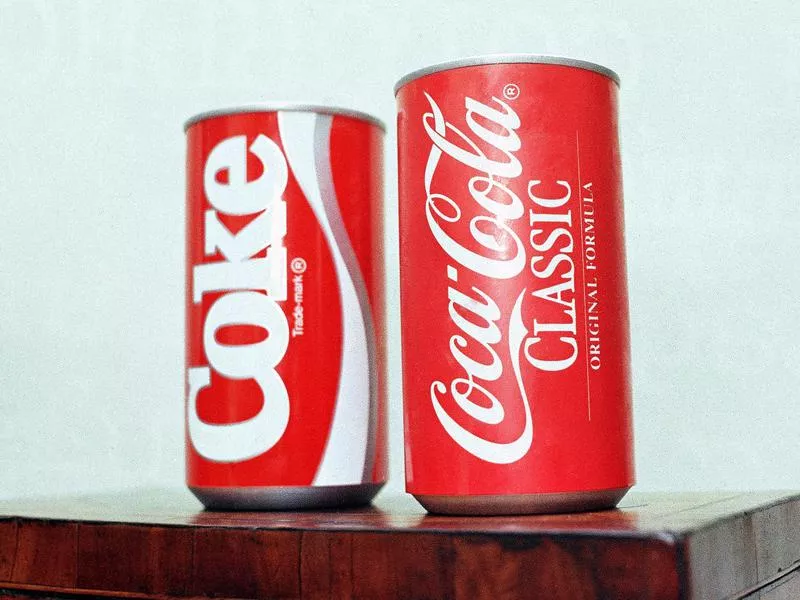“Only those who dare to fail greatly can ever achieve greatly,” politician Robert F. Kennedy once said. He wasn’t speaking to the people at Google, Apple or Coca-Cola — but he might as well have been. These manufacturing giants are just a few of the many who’ve experienced huge failures. Yes, even the wealthiest, most successful companies in the world have had their share of product flops.
If you see failure as a stepping stone to success, you’re more likely to achieve your goals. Just look at Thomas A. Edison and his relentless quest to create a light bulb. “I have not failed,” he said. “I’ve just found 10,000 ways that won’t work.”
So for any budding entrepreneurs out there, these 35 product flops may be reassuring. You might be familiar with some of them, while others may have passed you by. They all have one thing in common: proof that nobody gets it right, all the time.
New Coke

Charles Kelly / AP Photo
Company: Coca-Cola
Year introduced: 1985
What it was: Cola drink
In April 1985, Coca-Cola made an announcement that shocked the world: It was changing the secret formula behind the world’s biggest soft drink. According to Coca-Cola, the new formula would be sweeter and tastier than rival Pepsi.
Despite the big change being, well, not so big after all — TIME’s food critic Mimi Sheraton described it as “a little like classic Coca-Cola that has been diluted by melting ice” — consumers weren’t happy. When it comes to their favorite soft drinks, it appears people really don’t like change. Only three months after the launch of New Coke, the old recipe was reinstated. New Coke may have flopped, but it worked wonders for Coca-Cola — its stock soared after the original drink came back.
Missed New Coke the first time around? Coca-Cola has revived it briefly as a promo for “Stranger Things 3,” which takes place during the New Coke-era.
Apple Newton

Paul Sakuma / AP Photo
Company: Apple
Year introduced: 1993
What it was: Personal digital assistant
Before Apple was the world’s most valuable company, it made a few dodgy decisions, including the development of the Newton, a series of personal digital assistants (PDA) that were first shipped in 1993. It promised a simple, portable, flexible experience, which included the ability to take notes faster than any pen and paper. The reality was that the Newton’s handwriting recognition was so bad it was the butt of a joke on “The Simpsons,” and with a price tag of $700, it was way too expensive for most consumers.
Of course, Apple later produced the iPad, which is indisputably the world’s best tablet — so maybe the whole Newton embarrassment was a lesson worth learning.
Sega Dreamcast
Company: Sega
Year introduced: 1999
What it was: Game console
One of the biggest tech flops in history was the Sega Dreamcast, a console intended to put Sega back on the map in 1999. While it had some powerful hardware and favorable reviews in the early stages, it simply couldn’t compete with the PlayStation 2 or the Xbox. It was eventually canceled in 2001, and Sega never built another console again.
Part of the problem may have been the advertising campaign, which was built around the vague slogan, “It’s thinking,” which failed to highlight any of the benefits of the Dreamcast. On the other hand, Microsoft’s ad strategy for the Xbox was clear, with a heavy focus on games.
Betamax
Company: Sony
Year introduced: 1975
What it was: Video cassette format
Before the VHS tape became the standard video cassette format, Sony introduced its Betamax format. It had 12 months of exposure before JVC introduced the VHS tape, but failed to capitalize on that, despite being superior both in terms of resolution and sound quality.
Sony tried to be too greedy, refusing to license its technology to other manufacturers. Meanwhile, JVC licensed its VHS technology to anyone who expressed an interest, and grabbed the biggest slice of the pie. Betamax had 100 percent of the VCR market in 1975; by 1988, its share had fallen to 10 percent.